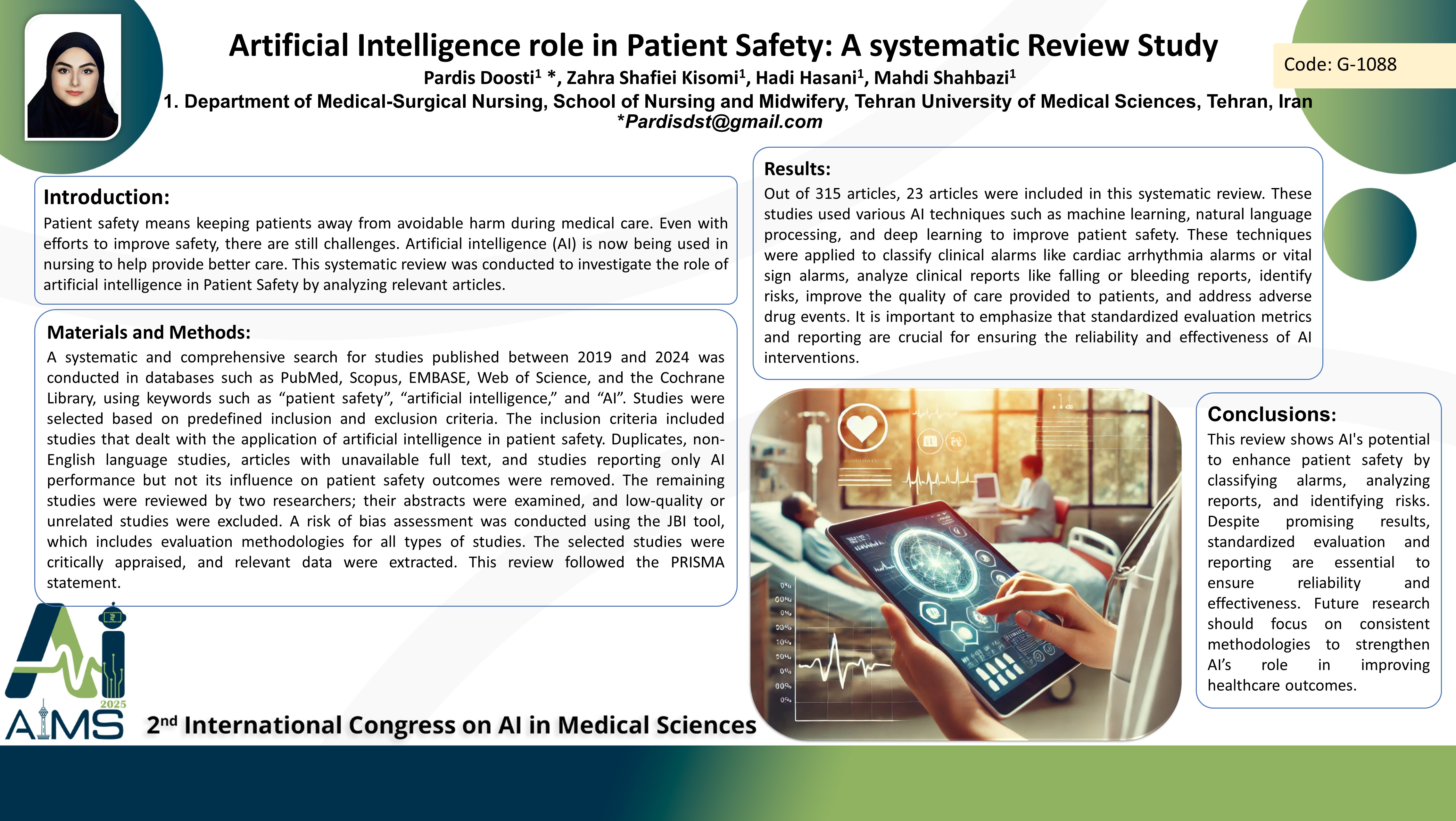نقش هوش مصنوعی در ایمنی بیمار: مطالعه مروری سیستماتیک
کد: G-1088
نویسندگان: Pardis Doosti * ℗, Zahra Shafiei Kisomi, Hadi Hasani, Mahdi Shahbazi
زمان بندی: زمان بندی نشده!
برچسب: سیستم های تصمیم یار بالینی
دانلود: دانلود پوستر
خلاصه مقاله:
خلاصه مقاله
Background and aims: Patient safety means keeping patients away from avoidable harm during medical care. Even with efforts to improve safety, there are still challenges. Artificial intelligence (AI) is now being used in nursing to help provide better care. This systematic review was conducted to investigate the role of artificial intelligence in Patient Safety by analyzing relevant articles. Method: A systematic and comprehensive search for studies published between 2019 and 2024 was conducted in databases such as PubMed, Scopus, EMBASE, Web of Science, and the Cochrane Library, using keywords such as “patient safety”, “artificial intelligence,” and “AI”. Studies were selected based on predefined inclusion and exclusion criteria. The inclusion criteria included studies that dealt with the application of artificial intelligence in patient safety. Duplicates, non-English language studies, articles with unavailable full text, and studies reporting only AI performance but not its influence on patient safety outcomes were removed. The remaining studies were reviewed by two researchers; their abstracts were examined, and low-quality or unrelated studies were excluded. A risk of bias assessment was conducted using the JBI tool, which includes evaluation methodologies for all types of studies. The selected studies were critically appraised, and relevant data were extracted. This review followed the PRISMA statement. Results: Out of 315 articles, 23 articles were included in this systematic review. These studies used various AI techniques such as machine learning, natural language processing, and deep learning to improve patient safety. These techniques were applied to classify clinical alarms like cardiac arrhythmia alarms or vital sign alarms, analyze clinical reports like falling or bleeding reports, identify risks, improve the quality of care provided to patients, and address adverse drug events. It is important to emphasize that standardized evaluation metrics and reporting are crucial for ensuring the reliability and effectiveness of AI interventions. Conclusion: This systematic review shows the promising role of Artificial intelligence in patient safety, by detecting errors, organizing patients, and managing.
کلمات کلیدی
Artificial Intelligence, Clinical Error, Nursing
